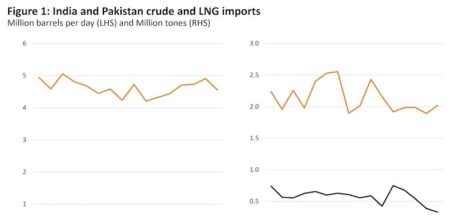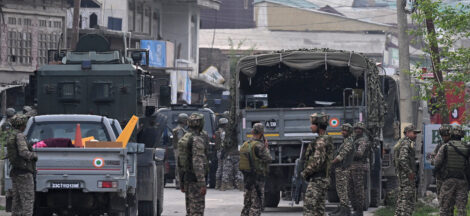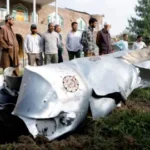By Dr. Gyan Pathak
Display of India’s capacity to strike and defend in country’s war against terror, which unfortunately conceived by Pakistan’s ruling establishment as war against that country, has brightened the scope of employment opportunities in and accelerated growth of defence manufacturing sector of India.
Only about two months ago in February 2025, India had secured a US$ 440.3 million deal to export BrahMos missiles to Indonesia. Now, when Pakistan has decided to align with terror networks and waging war against India, the Government of India has left with no option but to defend itself and strike inside Pakistan.
India’s display so far in Indo-Pak undeclared war has been excellent, and that should boost the credibility of India’s defence manufacturing sector. Even prior to this actual display of action, India has already showcased its advanced defense manufacturing capabilities, which also included the domestic production of aircraft carriers.
Demand of defence items manufactured in India is most likely to accelerate, both domestically, and abroad, with rising concerns of national security. India’s defence exports had crossed US$ 2.43 billion in FY24, with a target of US$ 5.8 billion by 2029. Defence exports grew by 334% in the last five years. India now exports to over 75 countries due to collaborative efforts.
As for annual defence production, it hit record high of US$ 15.34 billion in FY24 up by 16.7% from FY23 last year. Till April 2023, a total of 606 industrial licences were issued to 369 companies operating in defence sector.
The Union Budget for 2025-26 has an outlay of Rs 6,81,000 lakh crore for the Ministry of Defence, which was 9.5 per cent higher than the amount allocated in 2024-25. The Centre has also launched a SRIJAN portal to promote indigenization of defence production. Over 34,000 items are available for public view and 10,000 items have been indigenized till January 2024.
India has already established two Defence Industrial Corridors – one in Uttar Pradesh and the other in is Tamil Nadu. Additionally, the country has around 194 defence tech startups building innovative tech solutions to empower and support India’s defence manufacturing efforts.
Over the last five years, India has been ranked among the top importers of defence equipment to gain technological advantages over rival countries. To reduce external dependence, India has already taken several initiatives, including ‘Make in India’.
Both the Defence Industrial Corridor are set to play crucial role in accelerated growth of defence manufacturing and employment opportunities in mass scale, which will be supported by increased domestic and global demand.
Defence Industrial Corridor in Uttar Pradesh has already attracted investment commitments worth Rs 30,000crore through 170 MoUs, which may potentially create around 50,000 employments. Actual investment has already reached Rs 9,462 crore, which is expected to create 13,737 direct jobs.
Tamil Nadu Defence Industrial Corridor has also attracted potential investment of Rs11,794 crore from 53 industries and organisations, with Rs 3,861 crore already invested. It is also set to create thousands of employment opportunities.
Nirmal Bang report had come out just couple of days before the Pahalgam terror attack of April 22, 2025, in which India’s defence production was projected to reach Rs 1.75 trillion by FY25. The report maintained a positive outlook on the sector citing the government’s focused approach to boost domestic defence production and reduce dependency on imports.
It had mentioned the record-breaking development that the Ministry of Defence signed 193 contracts in 2024-25 with total value exceeding Rs 2.1 trillion. It was the highest-ever figure and was nearly double the previous period. Out of these, 177 contracts – making up 92 per cent of the total – were awarded to the domestic defence industry. These domestic contracts are valued at around Rs 1.6 trillion, accounting for 81 per cent of the total contract value.
The Nirmal Bang report also noted that the Defence Acquisition Council (DAC) approved eight capital acquisition proposals worth Rs 540 billion in FY25. The approvals were part of the broader plan to upgrade and modernize the armed forces.
The ongoing undeclared war between India and terror networks supporting Pakistan is sure to give further push to accelerated growth of defence manufacturing in India much more than what had been visualized by Government of India before the India’s attack on May 7 on terror networks in Pakistan.
The top three market segments are likely to get boost which are military fixed wing; naval vessels and surface combatants; and missiles and missile defence systems. Military rotorcraft, submarines, artillery, tactical communications, electronic warfare, and military land vehicles are some of the other segments which are likely to grow rapidly. (IPA Service)




 On The Fourth Day After Indian Strikes On Terror Camps – It Is Now Another War With Pakistan
On The Fourth Day After Indian Strikes On Terror Camps – It Is Now Another War With Pakistan 